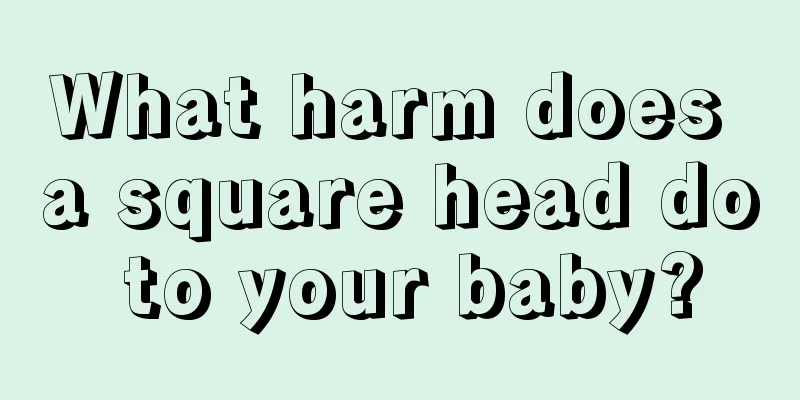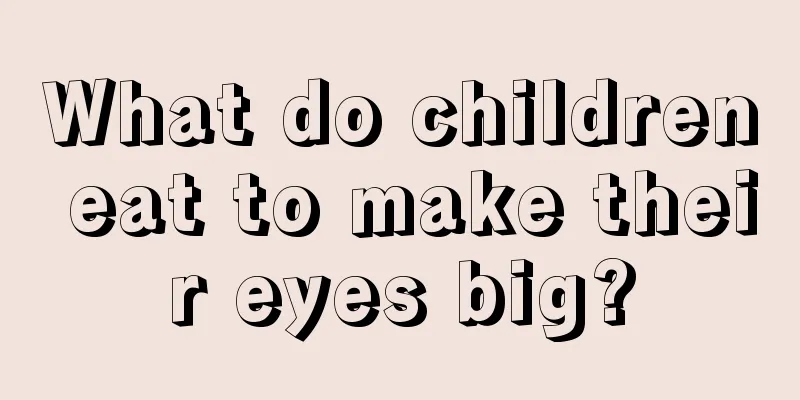Newborn baby has small red spots on face and head

|
Many parents will find that their babies have small red spots on their faces and heads. There are many reasons for this situation. It may be that the baby is allergic to certain items and has eczema, it may be too hot and cause heat rash, or it may be caused by improper diet. In short, parents need to pay special attention. The following is a detailed introduction to why there are small red spots on the faces and heads of newborns. 1: You may be allergic to something and have eczema. Pay attention to what your baby has eaten, then stop feeding him one by one to see if there is any improvement. You can also use some baby eczema cream. The Lefu Cream from Beijing Institute of Child Health is very effective. If it's serious, get checked. 2: You may be wearing too many clothes, which causes prickly heat rash, usually in patches. How to judge whether your child is hot: Touch the knees, arms, and thighs to see if there is sweat. If so, it means the child is too hot. 3: It may be food accumulation, that is, feeding too much and indigestion. The food should be fed on time and in fixed quantity every day. Newborn care tips: 1. Living environment Newborns are somewhat not adapted to the changes in external temperature. The suitable indoor temperature should be maintained at 25℃ ~ 28℃. Appropriate cooling is required in midsummer, while keeping warm in winter. However, attention should be paid to ventilation and it is best to have a heater nearby. The indoor light should not be too dark or too bright. Some parents believe that newborns have weak photosensitivity and are afraid of irritating their eyes, so they often like to hang heavy curtains. In fact, this is not advisable. Babies should learn to adapt to natural indoor light and avoid direct sunlight to their eyes. 2. Clothes and diapers The underwear of newborns (including diapers) should be made of soft and absorbent cotton fabrics. It is best not to use chemical fibers or printed and dyed fabrics. The color of clothes should be light to facilitate the detection of dirt and prevent dyes from irritating the newborn's skin. Clothes should be as loose as possible, not hinder limb movements and easy to put on and take off. Because the newborn's head dissipates more heat, he should wear a small hat when the climate is cold or the room temperature is low. The hat should also be soft and comfortable. Use soft, absorbent cotton fabrics for diapers, wash and change them frequently, usually more than 4 times during the day and more than 2 times at night. Clean the baby's butt each time you change it, and apply an appropriate amount of skin care oil. Choose diapers of better quality and good breathability. Try to use diapers at home, and use diapers when going out or sleeping. Note that diapers or diaper wrapping should not be too tight so that the limbs can stretch freely. 3. Sleep and sleeping posture Sleeping posture affects breathing, and the newborn's head is relatively soft, so a good sleeping posture is beneficial to the development of the head. It is recommended to have a comfortable small pillow with a thickness of 1 to 2 cm, slightly sunken in the middle and slightly raised at both ends. The best sleeping position is lying on your back or side to avoid compressing the chest and lungs. It is recommended to sleep on your side after feeding to avoid suffocation caused by spilled milk or choking. When lying on your back, you should change your position frequently. Full-term babies are more active, so they can lie prone in the first few days after birth to facilitate the outflow of respiratory secretions and prevent vomitus from flowing back into the trachea. However, when lying prone, the pillow must be removed and the head must be turned to one side. Parents must be present to supervise. |
<<: What are the taboos when visiting a newborn baby?
>>: Sequelae of lumbar puncture in newborns
Recommend
What are the symptoms of pollen allergy in children?
Many adults are afraid to go out in spring. Once ...
What should I do if my two and a half year old baby has athlete’s foot?
A person will develop many diseases as he grows u...
How to educate a child who curses?
Children are not only very curious, but also have...
How many months does it take for a baby to have normal teeth?
Every stage of the baby's growth is very impo...
One-year-old baby often shakes his head
Many parents will find that their one-year-old ba...
The child coughs as soon as he lies down to sleep
Some children cough when they sleep, and they cou...
Children sleeping independently
Children sleep with their parents when they are v...
What to do if a child has a nose infection
Rhinitis is an inflammation of the nose in childr...
What anti-inflammatory medicine should be used for baby's cough
In the process of taking care of a baby, what the...
What should I do if my 10-month-old child is constipated?
Many Chinese families choose to wean their childr...
Do children with conjunctivitis blink frequently?
Conjunctivitis is a common eye disease in childre...
How long does a 20-day-old newborn sleep in a day?
Everyone knows that newborns are very sleepy, bec...
Eight measures to prevent children's spring diseases
Spring is the season when young children are most...
How can children prevent freckles from being inherited?
Everyone knows about the skin problem of freckles...
Baby sweats on back when sleeping at night
New mothers will encounter this problem. Babies s...









